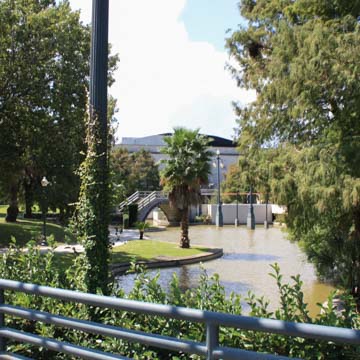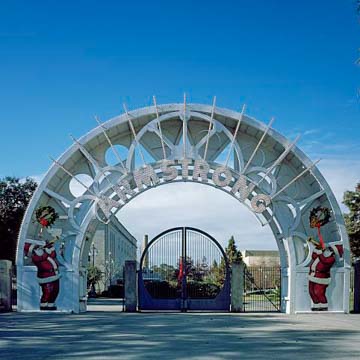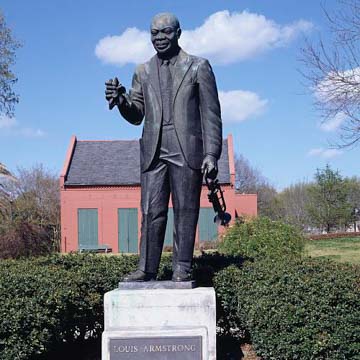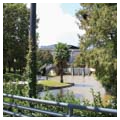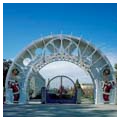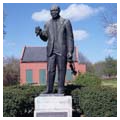Armstrong Park is adjacent to Congo Square, where as early as the 1740s slaves sold their homemade wares and gathered socially, performing music on Sunday afternoons. One of the most significant sites of African American culture in the United States, the square has unfortunately lost its clear identity, being completely subsumed within Armstrong Park.
Louis Armstrong Park was planned as a typical mid-twentieth-century urban renewal project, programmatically akin to New York City’s Lincoln Center, on a thirty-two-acre site covering fourteen blocks of Tremé’s historic urban fabric, nine of which were cleared of houses to facilitate its construction. Later named for the famous New Orleans musician, the park includes a statue of Armstrong by African American artist Elizabeth Catlett, together with later artworks of varying quality. Loosely modeled on Tivoli Gardens in Copenhagen, Denmark, Armstrong Park was picturesquely laid out with a lagoon, hillocks, and three hundred trees. From the start, the project was controversial because it ruthlessly swept away a historic neighborhood of architectural and cultural significance, including bars and clubs where jazz musicians had played and houses where they lived. When the park was completed, it was perceived as unsafe (even with a substantial fence) and was little used.
Among the structures within Armstrong Park is one of the red-and-white Mediterranean Revival pumping stations of the Sewerage and Water Board of New Orleans. In front of Congo Square is Favrot and Livaudais’s Renaissance-styled Municipal Auditorium of 1929, built on land created when the Carondelet Canal and its turning basin were filled, which has sat unoccupied and deteriorating after taking on five feet of water during Hurricane Katrina. While smaller nineteenth-century buildings were moved into the park (see OR39), its principal new building is the Mahalia Jackson Center for the Performing Arts (1973), designed by Mathes, Bergman and Associates with Harry Baker Smith. Nearby is a collection of heirloom roses, many of which were rooted from plants in the city’s older neighborhoods. The park will gain new life when (and if) the National Park Service completes the New Orleans Jazz National Historical Park within its boundaries, a long-planned initiative that has yet to be funded.















